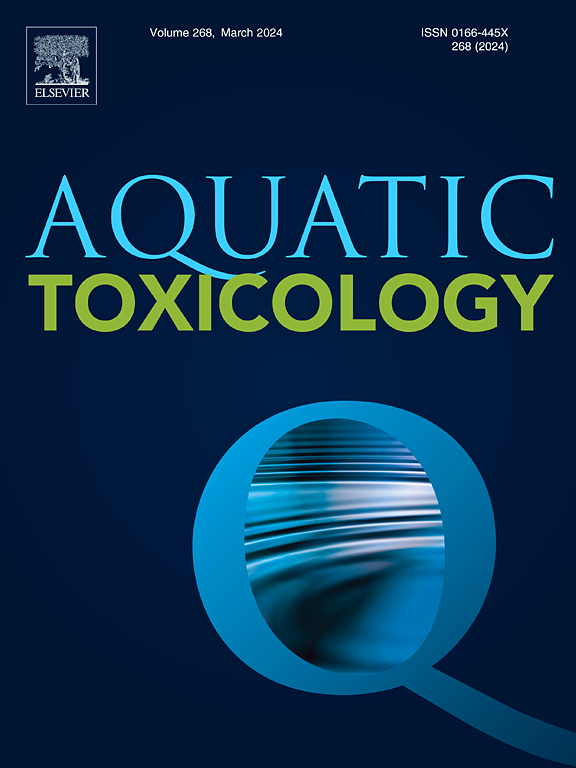Sublethal effects of atrazine concentrations exposure on tadpoles of Dendropsophus minutus: Evaluation of redox status, micronuclei frequencies and comet assay as biomarkers
IF 4.1
2区 环境科学与生态学
Q1 MARINE & FRESHWATER BIOLOGY
引用次数: 0
Abstract
Atrazine (ATZ) is an herbicide that can persist in terrestrial and aquatic environments and potentially cause significant harm to amphibian health. Therefore, the Brazilian National Environment Council (CONAMA) sets the limit concentration of ATZ in waters at 2μg/L. Our study evaluated the genotoxic, mutagenic, and biochemical alterations in Dendropsophus minutus tadpoles in the 25 Gosner stage, to acute exposure (96h) of ATZ (T1 - 0.02µg/L, T2 - 0.04µg/L, T3 - 0.08µg/L, T4 - 2µg/L). The comet assay showed all concentrations caused DNA damage with an increase to T2, T3, and T4. In the micronucleus test (MN) and Erythrocyte Nuclear Abnormality test (ENA), T3 and T4 accumulated more anucleated (AN), binucleated cells (BC) and ENAs. Redox imbalance was not detected. Therefore, we conclude that the concentrations tested are not safe for the health and development of D. minutus tadpoles, and the CONAMA limit needs to be reviewed since all tadpoles presented DNA damage. More studies are necessary to identify other alterations that ATZ can cause in the tadpole health of tropical species. Therefore, implementing public policies aimed at safeguarding the lives of both adult and juvenile amphibians is imperative for the conservation of biodiversity and ecosystem stability.

求助全文
约1分钟内获得全文
求助全文
来源期刊

Aquatic Toxicology
环境科学-毒理学
CiteScore
7.10
自引率
4.40%
发文量
250
审稿时长
56 days
期刊介绍:
Aquatic Toxicology publishes significant contributions that increase the understanding of the impact of harmful substances (including natural and synthetic chemicals) on aquatic organisms and ecosystems.
Aquatic Toxicology considers both laboratory and field studies with a focus on marine/ freshwater environments. We strive to attract high quality original scientific papers, critical reviews and expert opinion papers in the following areas: Effects of harmful substances on molecular, cellular, sub-organismal, organismal, population, community, and ecosystem level; Toxic Mechanisms; Genetic disturbances, transgenerational effects, behavioral and adaptive responses; Impacts of harmful substances on structure, function of and services provided by aquatic ecosystems; Mixture toxicity assessment; Statistical approaches to predict exposure to and hazards of contaminants
The journal also considers manuscripts in other areas, such as the development of innovative concepts, approaches, and methodologies, which promote the wider application of toxicological datasets to the protection of aquatic environments and inform ecological risk assessments and decision making by relevant authorities.
 求助内容:
求助内容: 应助结果提醒方式:
应助结果提醒方式:


